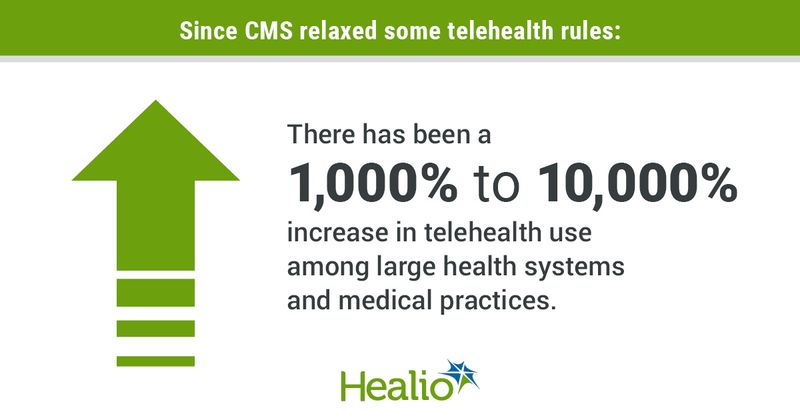The new normal: Making the most of telehealth
A panel of experts at the Primary Care Collaborative Annual Conference discussed ways to maximize the use of telehealth.
Earlier this year, CMS said it would relax some of its telehealth rules during the COVID-19 public health emergency, leading to “between a 1,000 to 10,000% increase in the utilization of telemedicine visits by some health systems,” Ian Tong, MD, an adjunct clinical professor of medicine at Stanford University and chief medical officer of Doctor on Demand, said.

A recent University of Michigan poll showed more older Americans are using telehealth than in the past, added Dorothy Siemon, JD, AARP’s senior vice president of policy development and integration. This finding may allow physicians to deploy telehealth for patients who previously were not considered.
“There was always some interest in telehealth among this population, but now we see that there are many seniors who can and want to take telehealth on,” she said.
Other ways to maximize telehealth use that the panel mentioned include using either the revenue from these visits or the increased workload it causes — or both — to bring furloughed colleagues back to the workplace, connect patients to specialists and partner with county health departments to offer preventive care such as vaccinations.
Tong said telehealth may also reduce some burnout symptoms among providers.
“If practices and doctors are able to share office space, I could see a more sustainable model where they're practicing 1 or 2 days from home, virtually,” he said. “When they're sharing that office expense, it'd probably be a good outcome for doctors and a more sustainable model for the long run.”
The panel also noted that using telehealth conserves personal protective equipment and reduces risks from unnecessary exposure. Currently, there no specific rules regarding “how much or how little” a physician uses telehealth to treat patients, said Stephanie E. Quinn, the American Academy of Family Physicians’ senior vice president of advocacy.
“The biggest predictor of positive health outcomes is patient engagement and making sure that the care being delivered to them is done in a meaningful way,” she said. “Telehealth is meant to be additive to that relationship. We need to give physicians and patients the latitude to determine how much is appropriate.”
Tong agreed that telehealth should help patient-physician relationships thrive.
“We need to begin asking ourselves, can this [procedure] have a virtual, more efficient application?” he said. “It is a tool, but we want to make sure the patient feels comfortable that the balance of using that tool is appropriate since patients that have those primary care relationships are going to are going to have the best clinical outcomes.”
Tong also said large employers and health plans have begun to request that more comprehensive services be delivered virtually. Therefore, physicians who become well-versed in telehealth use now may be ahead of the curve when these requests become frequent.

